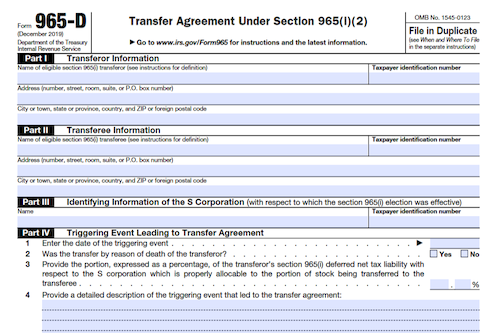Form 8898 is used by US taxpayers to notify the IRS when they have become or stopped being a bona fide resident of a US possession according to Section 937(c). Taxpayers must file this form if their worldwide gross income for that year is more than $75,000. Penalties may be imposed for not filing the Form 8898 correctly.
What is Form 8898?
Form 8898 is a document required by the IRS when you become or cease to be a bona fide resident of a U.S. possession, such as American Samoa, Guam, the Commonwealth of the Northern Mariana Islands (CNMI), the Commonwealth of Puerto Rico, or the U.S. Virgin Islands. You must file this form when your worldwide gross income is more than $75,000, and you have either taken a position that you became a bona fide resident of a U.S. possession or ceased to be a bona fide resident of a U.S. possession. A penalty of $1,000 may be imposed for failure to file Form 8898, or for incorrect information on the form.
IRS Form 8898 – Who Needs to Fill It Out?
According to IRS Form 8898, you must fill out the form if your worldwide gross income exceeds $75,000 and if you took a position to become or to cease being a bona fide resident of a U.S. possession in accordance with section 937(c). This includes American Samoa, Guam, the Commonwealth of the Northern Mariana Islands (CNMI), the Commonwealth of Puerto Rico, and the U.S. Virgin Islands. Unless there is reasonable cause, failure to file this form or disregard of incorrect information may result in a penalty of $1,000. To qualify as a bona fide resident, you must satisfy the tax home and closer connection tests as well as the presence test. Check the form & instructions to see if any of the special rules apply to you.
Step-by-Step: Form 8898 Instructions For Filling Out the Document
Form 8898 allows taxpayers to notify the IRS of their bona fide residence in certain U.S. possessions. To be required to file Form 8898, a taxpayer’s worldwide gross income must exceed $75,000 in the tax year in question, and the taxpayer must have either taken a position for U.S. tax purposes that they either became or ceased to be a bona fide resident of a U.S. possession after a tax year where they filed as a citizen or resident. Form 8898 should be filed by the due date for filing Form 1040, and should be mailed to a specified address–not filed with the taxpayer’s tax return. If a taxpayer is required to file Form 8898, but fails to do so, they may be fined $1,000 unless reasonable cause applies.
Below, we present a table that will help you understand how to fill out Form 8898.
| Form 8898 | Instructions |
|---|---|
| If a taxpayer wants to exclude extraterritorial income from their gross income for the tax year, they should use Form 8898 to figure that amount. This form must be attached to the taxpayer’s income tax return. Taxpayers may only be able to claim the ETI exclusion for transactions under a binding contract that meets specific requirements. Eligibility depends on the tax year beginning date: prior to May 18, 2006, transactions must satisfy certain criteria and have been in effect on September 17, 2003; on or after May 18, 2006, ETI exclusion is not available. The taxpayer must also understand the specific requirements for Qualifying Foreign Trade Property, Foreign Economic Process Requirements, and Foreign Trade Income, among others. By entering the relevant data and following the instructions, taxpayers should be able to figure the ETI exclusion amount on this form. |
|
Do You Need to File Form 8898 Each Year?
Do You Need to File Form 8898 Each Year? Yes, if you meet both of the following conditions: 1) your worldwide gross income is more than $75,000 and 2) you took a position for U.S. tax purposes that you became or ceased to be a bona fide resident of a U.S. possession after a tax year for which you filed a U.S. income tax return. You must file a separate Form 8898 for each spouse if both are required to file. Failure to do so may result in a penalty of $1,000 unless reasonable cause is shown.
Download the official IRS Form 8898 PDF
On the official IRS website, you will find a link to download Form 8898. However, to make it easier for you, we are providing the link in our article, which comes directly from the official irs.gov website! Click to download: Form 8898
Sources:




